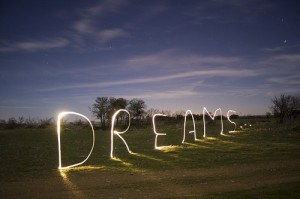This was a year of big leaps and painful stumbles, of problem solving and getting it wrong. Then righting myself and finding balance. For a bit. For me, that’s the point of living a creative life. Not bliss, not smooth sailing, but a mix of everything.
It gives real perspective on both the high and low points—deep enjoyment of the highs allows me to tolerate the lows. And for me, that’s the point. The lows aren’t defeats if I can keep the highs in mind. It’s the distance traveled between them that make the highs and lows work, and they work together. Not one at a time. And it’s the effort for both that needs to be honored. No one deliberately screws up. We were on the way to something else when we realize we were heading in the wrong direction. Often at full tilt.
Because I find hope a false emotion (often a great mask for the inner critic), knowing that success and failure come in waves makes both of them bearable.
Hope allows me to think that mistakes are accidents and success is “who I really am.” Hope pushes me to think that all things will end well. But they don’t. Some things end badly. I am neither my great success nor am I my embarrassing failure. The red-ink ancient Chinese chop up there says, “Do not become complacent with victory; do not become frustrated with defeat.” Good point. I am a spirit in motion, traveling toward and away from something at the same time.
This year brought me the gift of saying goodbye well, when my father-in-law died. And the gift of great, unbridled pride and unconditional love, given me by my son. And an acceptance of letting go of the long struggle over a quilt my mother never finished.
My biggest disappointment (in myself) came when a treasured client quit in anger, and stalked away. Much of coaching success depends on self-management, the realization that I am a space of energy only. I do not “make” clients succeed. I do not “cause” their failure. But when a client is careening toward a decision fueled by anger, it is hard not to try to wrest the wheel of decision-making out of those clenched hands, and try to fix, correct the path. It’s overpowering to want to avert disaster.
But I took a vow in coaching class, a vow not to fix, not to give advice. Because fixing and giving advice doesn’t allow for the client to see that learning-important mistake and live it. Instead, giving advice allows for blame and anger toward the coach instead of measured consideration of personal decisions. The best coaches I know are masters of “no advice”.
In the following weeks, I knew I could give the client an easy out. Go back and pretend the careening skid hadn’t happened. Fix my image of myself at the same time. Make myself kinder, at least in the rear-view mirror. But life doesn’t work that way. This was a client decision. My work was to accept that decision.
Some things can’t be mended, fixed, healed or backed up. Consequences are what we choose when we choose an action and make the decision. I had to accept that every illusion I had of wanting to change the outcome was not my work to do. The client was behaving true to personal human nature, turning away from the change that was suddenly no longer worth fighting for. Painful as it was, I had to step aside and let the future happen, whatever it will be.
And that’s a good lesson to pick out of the smouldering disappointment. You can explain, but you cannot understand for others. You can learn to accept what is. You can give up hope that somehow, magically, history will forget and back up and we can live a day over again, wiser now. Every parent in Newtown, Connecticut would pay dearly for that. But it cannot be. I cannot decide not how to change the world, but only how to change myself. We talk about forgiveness a lot, insist on its power, until, of course, it is up to us to forgive. Then it seems impossible.
This has been a year rich in lessons–on change, accepting, forgiveness, intention, focus, letting go, growth. All of those are words that you, my blog readers, have taken as your words for 2013. All are good. You are the brightest, funniest, wisest people I have never met, and I hope to get to know you all much better in 2013.
Words are powerful. Choose the ones you want to live by well.
—-Quinn McDonald wishes a few deep hours of reflection for everyone this year, and the deep joy of acceptance.

















